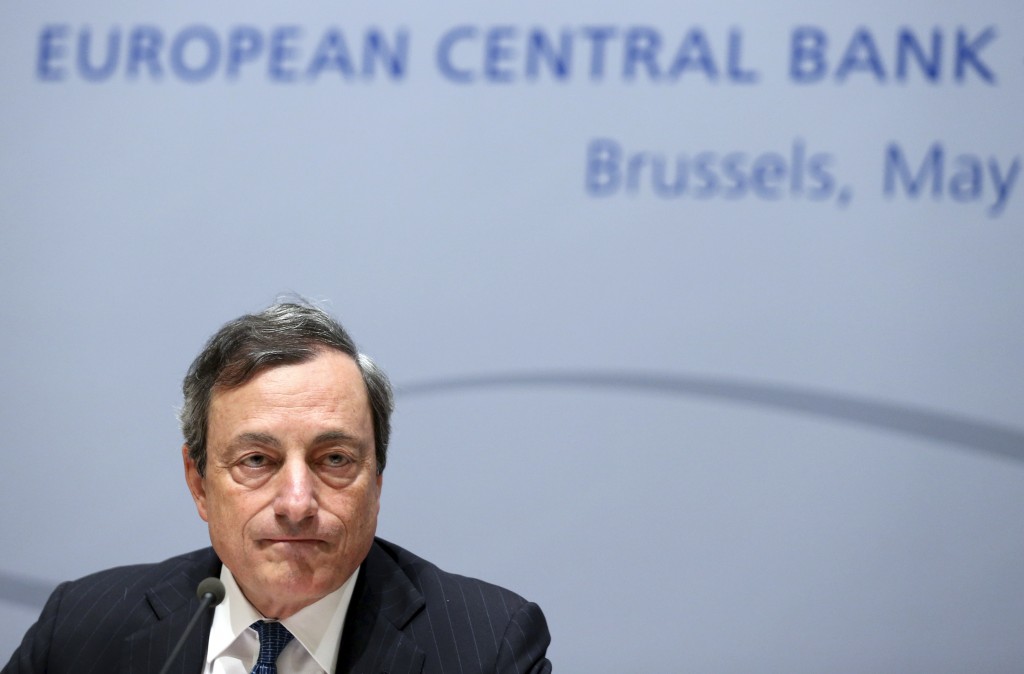
D-DAY NOTEBOOK: Old film, new dance recall history – Appeal
June 7, 2014
New Science Europe head questions centralized approach to research
June 7, 2014Why are interest rates so low? And how long will they stay that way?
Now that the European Central Bank has passed another historic milestone by imposing negative interest rates on a major part of the world economy, there is one explanation of the unprecedented collapse of interest that everyone can agree on. Central banks can set money market interest rates as low or as high as they please just by giving commercial banks whatever amount of excess credit is needed to keep these rates at the chosen level.
Since early 2009, central bankers all over the world have decided, rightly or wrongly, that interest rates should be lower than ever before in history. Moreover, these policymakers made it clear that they will continue to squeeze interest rates down to near-zero, or even negative, levels until next year and perhaps beyond.
But this obvious answer to the interest rate conundrum only begs a more interesting question: What accounts for the rock-bottom levels not only of the overnight interest rates that central banks set directly, but also the long-term rates that depend on the willingness of pension funds, insurers and private investors to tie up their savings for 10 years or more in government bonds?
If investors were absolutely confident that short-term rates set by the central banks would remain near zero for many years ahead, then the seemingly paltry returns — varying from 2.6 percent down to 0.6 percent — on 10-year bonds issued by the U.S., European and Japanese governments would seem generous. Rational investors would be happy to lock up their money for a decade at these rates. But why are investors as confident about the persistence of near-zero interest rates as today’s low bond yields seem to imply?
 There are two possible answers, reflecting diametrically opposite economic views. The pessimistic view is that the world economy since the 2008 financial crisis has settled into a “new normal” of weak growth and negligible inflation or even falling prices. Whatever causes they attribute for this economic ice age — financial fragility, demographics, stagnating productivity or the unintended consequences of the post-2008 monetary experiments — proponents of the new normal agree that central banks will keep interest rates near zero for most of the next decade. So today’s historically low bond yields will offer investors much higher incomes than they will be able to secure in future years.
There are two possible answers, reflecting diametrically opposite economic views. The pessimistic view is that the world economy since the 2008 financial crisis has settled into a “new normal” of weak growth and negligible inflation or even falling prices. Whatever causes they attribute for this economic ice age — financial fragility, demographics, stagnating productivity or the unintended consequences of the post-2008 monetary experiments — proponents of the new normal agree that central banks will keep interest rates near zero for most of the next decade. So today’s historically low bond yields will offer investors much higher incomes than they will be able to secure in future years.
Yet much of the recent evidence from the world economy and financial markets has contradicted this grim view. Economic statistics now mostly point to accelerating growth in the United States, Germany and Britain and at least a stabilization of the economic slowdowns in Europe, China and Japan. Inflation is also picking up in the United States, Japan and Britain.
Meanwhile, in financial markets, equities are hitting all-time records and industrial commodities are rising. In short, the equity and commodity markets contradict the economic messages from the bond market.
They cannot both be right — which brings us to the alternative explanation for rock-bottom bond yields: bond markets may simply be disconnected from economic reality. This could be happening for four technical reasons:
1. Very aggressive central bank policies in Japan and Europe, where deflation and stagnation are still real dangers, have artificially depressed bond yields in the United States and Britain — despite the economic acceleration evident in these countries. For Japanese and German investors, whose governments only pay 0.6 percent and 1.4 percent respectively on 10-year bonds, a U.S. yield of 2.6 percent looks generous. Especially when the currency risks can be hedged at almost zero cost — as they can be today.
2. Low bond yields everywhere have been exaggerated by regulatory distortions. Pension and insurance funds have been forced to guarantee their long-term obligations by buying “risk-free” government bonds — despite the very low prospective returns on these investments. Banks have been encouraged to “de-risk” by regulations that favor loans to governments rather than private companies and households.
3. We must ask why prudential regulators would want to force-feed financial institutions with bonds whose “risk-free returns” are now so meagre that these investments now amount to a “return-free risk.”
A plausible answer is suggested by the history of postwar governments relieving themselves of wartime debts with regulations that forced savings into low-yielding long-term bonds — whose value was then whittled away by inflation. Governments must surely be tempted to repeat this process if bond market conditions allow. Which brings us to the final bond-market distortion.
4. Since late 1981, when short-term U.S. interest rates peaked above 20 percent, government bond yields have fallen continuously — if with occasional counter-trend interruptions — as memories of the 1970s’ great inflation faded.
During these 30 years, investors who believed government promises of ever-lower inflation and structurally declining interest rates consistently made money. Meanwhile, the “bond market vigilantes,” who dominated investment thinking in the 1980s by continually warning against politicians who try to renege on their debts through inflation, have gradually lost their jobs.
The upshot is that many of the survivors who now dominate bond investment tend to assume that the bull market they have enjoyed since 1981 will keep going — and every time bond prices fall (with yields correspondingly rising), this represents an opportunity to “buy on dips.”
What these instinctive bond bulls have failed to notice is that the 30-year trend of rising bond prices — and the corresponding decline in long-term interest rates — probably ended in 2012. Since July 2012, the peaks and troughs in U.S. long-term interest rates have been gradually rising, not falling.
Prospects for inflation and growth suggest that this trend of rising long-term rates will probably continue for many years. If so, then investors who buy bonds at today’s low yields will be big losers, while governments that issue, and then inflate away, these low-return obligations will rejoice.
PHOTO (TOP): A currency dealer looks at screens at a dealing room of a bank in Seoul, June 24, 2013. REUTERS/Lee Jae-Won
PHOTO (INSERT): European Central Bank President Mario Draghi addresses a news conference following a Governing Council meeting in Brussels, May 8, 2014. REUTERS/Francois Lenoir



